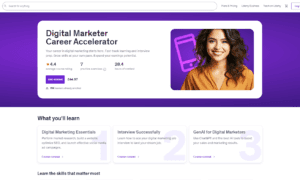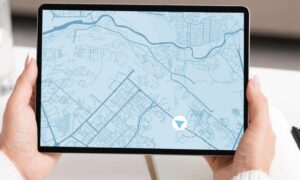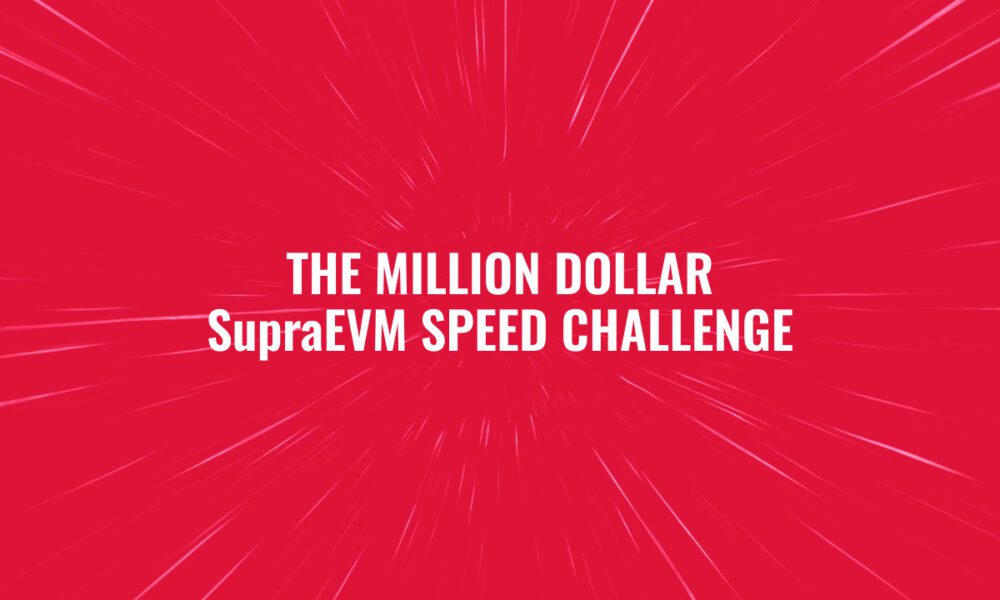If you are a small business owner getting noticed can feel like finding a needle in a haystack.
With more businesses going online, standing out is tougher than ever. That’s where content marketing comes in.
1. Understanding Content Marketing for Small Businesses
Content marketing is a strategic marketing approach focused on creating and distributing valuable, relevant, and consistent content to attract and retain a clearly-defined audience.
Unlike more interruptive forms of marketing, content marketing aims to pull customers in by serving their needs first and promoting your business second.
Why is content marketing important for small businesses?
or small businesses with limited marketing budgets, content marketing provides a highly effective and cost-efficient way to:
- Increase online visibility and organic traffic
- Build trust and credibility with your target audience
- Educate prospects and guide them through the buyer’s journey
- Generate warm leads and drive conversions
- Create long-term brand equity and customer loyalty
The benefits of an effective content strategy include increased website traffic, better search engine rankings for your small business website, more qualified leads, higher customer engagement and greater brand awareness. Plus, your upfront investments continue paying dividends over time.
2. Define Your Content Marketing Goals
Before diving into content creation, it’s crucial to define the strategic goals for your content marketing efforts. This allows you to map out an intentional plan and measure effectiveness.
Understand your target audience
Who are you trying to reach with your content? Get specific by developing buyer personas – semi-fictional representations of your ideal customers based on real data and research into their demographics, behaviors, motivations and goals. Having fleshed out personas makes creating content to appeal to your target audience much easier.
Map content to the buyer’s journey
The buyer’s journey represents the three main stages prospects go through – awareness stage, consideration stage, and decision stage. Your content should aim to guide buyers through each stage:
- Awareness Stage: Educational content to introduce your audience to a problem they may not realize they have yet.
- Consideration Stage: Content helping evaluate different approaches or solutions to their problem.
- Decision Stage: Thought leadership content, case studies and product information to persuade purchase.
Set SMART goals
Apply the SMART framework to set content marketing goals that are:
Specific – Example: “Increase organic traffic from target buyer personas by 25%.” Measurable – Decide which metrics tie back to your goals (website sessions, conversion rates, etc). Achievable – Based on your resources, bandwidth and current benchmarks.
Relevant – Focused on your highest-priority marketing objectives. Time-bound – Example: “…within the next 12 months.”
3. Types of Content to Create
Effective content marketing utilizes a mix of content types and formats to meet your audience’s needs. Here are some of the most powerful options for small businesses:
Blog Posts/Articles
A blog with frequent entries attracts new visitors and keeps them coming back. Identify target topics and keywords through audience research, competitor analysis, and tools like AnswerThePublic. Structure posts for SEO and readability with headings, bullet points, and images.
Create blog content zones for each of the three stages:
Awareness: “What is…” posts, beginner’s guides, industry news & trends
Consideration: Tutorial posts, tips and advice, comparisons of methods
Decision: Expert views, product-related how-tos, use cases & success stories
Videos
With higher engagement rates, video is an ideal content format for increasing dwell time and viewer retention. Types of videos include:
- Product demos, walkthroughs or case study videos
- Animated explainers to simplify complex topics
- Expert interviews or roundtable discussions
- Video tutorials and video podcast and how-to content
- Behind-the-scenes, company culture or event videos
Promote videos on landing pages, your blog, social media, email marketing and YouTube. Include relevant calls-to-action.
Guides/EBooks
Long-form, high-value guides and e-books establish expertise while generating newsletter subscribers when used as a lead magnet. These “pillar” pieces of content can live on a resource page and be continually promoted via email, social media and more.
For example, an e-commerce retailer may create guides around “The Complete Guide to Sustainable Online Shopping” or “Finding the Best [Product] in 2023: A Buyer’s Guide.”
White Papers/Case Studies
For B2B, SaaS, and industries involving complex products/services, authoritative reports, whitepapers and case studies are ideal for the bottom of the funnel when buyers need that final persuasion.
Infographics
Visually appealing infographics can breathe new life into existing data, tips or processes…
4. Content Creation Process
Developing an Editorial Calendar
An editorial calendar is essential for mapping out a consistent cadence for publishing new content across all your channels and content types. It helps bring together your overarching strategy, topics, and promotional activities into one streamlined system.
Your calendar should account for:
- Timeframes for different content types (e.g. weekly blog, monthly video)
- Content themes, annual events or holidays to build topics around
- Persona and buyer’s journey stage for each piece
- Channels for content distribution and promotion
- Ownership and responsibilities across your marketing team
Example: A landscape design company could plan their calendar around seasonality – having a “Lawn Care” content theme in spring, “Outdoor Living” in summer, “Fall Gardening” in autumn, etc. Each quarter they create new long-form pillar content like guides, while supporting it weekly with related blogs and videos.
Writing Tips and Best Practices
Whether blogging, scripting videos, or wordsmithing ebooks – quality writing is paramount for creating content that resonates.
A few universal tips:
- Focus on a clear content goal or takeaway up front
- Use an conversational yet authoritative tone
- Optimize for scalability with sections, callouts, and visuals
- Cite external data, quotes, and sources to build credibility
- Incorporate target keywords naturally, not stuffed
- End with a relevant call-to-action for visitors to take next
Example: For an accounting firm’s blog, the post “How to Simplify Quarterly Tax Prep” could feature invitational copy like “Streamlining quarterly taxes has never been easier with the 5 steps outlined below…” to hook the reader.
Repurposing & Refreshing Existing Content
Your best content deserves a second life and can be repurposed into new formats to get maximum mileage. This saves time while allowing you to re-optimize and re-promote it.
Some repurposing ideas:
- Update old blog posts with new stats/info
- Turn blogs into videos, PDFs, or presentations
- Extract tips from guides to create new social posts
- Consolidate series of posts into downloadable resources
- Record podcasts, interviews or webinars out of your content
Example: A closet company’s annual “Spring Cleaning & Organization Guide” can be broken into chapter PDFs, checklists, slideshow videos and more for easier content consumption.
Content Outsourcing Options
While a content manager should own the strategy in-house, small businesses can affordably outsource content creation to freelance writers, designers, videographers and SEO agencies. A few options:
- Freelance marketplaces like Upwork and Fiverr
- Industry-specific freelancer databases and job boards
- Content marketing agencies or white label services
- Local creative talent, writers, journalism students
- User-generated content from customers/community
Example: A meal prep service could run contests for user-submitted recipes and hire freelance photographers/videographers to capture it in a professional way.
5. Content Promotion & Distribution
On-Site Content Optimization (SEO)
Even your greatest content pieces won’t be seen without optimizing them for visibility in search engines. Apply on-page SEO best practices like:
- Keyword optimized titles, URLs, headers, alt text
- Fast loading times and mobile responsiveness
- Internal linking between related content
- Optimized meta descriptions pulling visitors in
- Schema markup for better search snippets/visibility
- Submitting new content for indexing through Google Search Console
Example: An eco-friendly apparel brand could optimize a “Sustainable Fashion Brands Guide” for relevant keywords like “ethical clothing companies,” “best sustainable fabrics,” etc.
Social Media Marketing
Foster an active presence on channels frequented most by your target audience. Share content through a mix of posts, stories, reels/videos, lives, and paid promotions.
Get stakeholders involved in sharing to their networks too. Engage appropriately with followers through comments, DMs, shares and have a system to redirect interested users toward gated email sign-ups or product pages.
Example: An indoor gardening store could share beautiful Instagram Reels of plant tours or time-lapsed growth while leveraging Pinterest to drive eyeballs to their “Best Low-Light Plants” guide.
Email Marketing
Leverage the list you’ve built through lead magnets and craft regular email newsletters sharing your latest and best content offerings. Segment lists by interests or buyer’s journey stage for more relevant emails.
Beyond standard newsletters, experiment with things like:
- Automated drip campaigns triggered by behaviors
- Special email courses or member-only exclusives
- Limited-time promos or sneak peeks for subscribers only
- Re-engagement emails to re-capture cold subscribers
Example: A SaaS company could create a “Crash Course” email series using excerpts from their product team’s knowledge base to nurture leads over a couple weeks.
Influencer Outreach
Connect with relevant influencers in your space that have an engaged following among your target audience. A few influencer promotional tactics:
- Gifting products for honest reviews or sponsored posts
- Collaborating on giveaways, events or co-marketed content
- Getting included in expert roundups or interviews
- Having them become a brand ambassador or affiliate
Example: A sports nutrition brand could work with fitness influencers to tap into their niche communities through product seeding, sponsorships and more.
Guest Blogging
Publishing branded content on external websites is a great way to earn backlinks and get exposed to new audiences. Some methods:
- Become a regular contributor for industry publishers
- Pitch blogs read by your target customers for one-off posts
- Partner with complementary businesses for cross-promotion
- Target localized blogs and hometown sources
Example: A home services company could offer a guest article on seasonal safety tips to local news outlets, mom blogs, or real estate websites accessed by homeowners.
Paid Promotion (Google/Facebook Ads etc.)
While organic promotion should be prioritized, strategic use of paid ads can rapidly amplify and complement your content distribution.
- Google Ads to get in front of searchers showing commercial intent
- Facebook/Instagram Ads precisely targeted to your audience personas
- Native advertising through networks like Outbrain
- Ads on relevant industry publishers, forums or apps
- Retargeting ads to visitors who consumed your content
Example: A B2B software company could run LinkedIn ads promoting its latest whitepaper or webinar to decision-makers at companies fitting their ideal customer profile.
While content marketing requires an upfront investment of time and resources, it pays exponential dividends for small businesses looking to increase online visibility, generate leads, and cultivate loyal customer relationships. By committing to a consistent strategy centered around your audience’s needs, you can establish your brand as a trustworthy industry authority. An epic content experience acts as a magnet continually pulling in your ideal buyers through value, education, and engagement at every stage of their journey. With the right goal-driven approach to creation, promotion, and community-building, small businesses unlock a scalable and cost-effective path for driving sustainable website traffic and revenue in our digital-first world. The brands taking a “they ask, you answer” mindset through remarkable content will find themselves pulling ahead of the competition.
Author:
Ivana Katz from Websites 4 Small Business is an award-winning web designer who builds websites that build your business. She provides unbeatable web design services to fit your budget.
The end result? Professional, custom-made sites that give your business the extra oomph it needs to stand out from the competition and make an impact.
Whether you’re a brand-new business or an established one ready to improve your digital presence, Ivana makes it easy to get your business online very quickly. Her websites are professional, tailored to fit your budget, and give your business a serious boost.



































